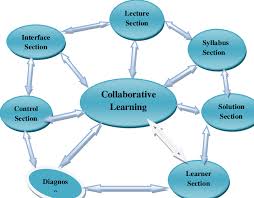
Collaborative learning is an educational approach that involves groups of students working together to solve a problem, complete a task, or create a product. It’s a deeply social activity that can enhance learning outcomes and develop key skills like communication, problem-solving, and critical thinking.
Here are six collaborative learning techniques that educators and students might find useful:
1. Think-Pair-Share: This technique involves three steps. First, individuals think about a question or issue silently. Then they pair up to discuss their thoughts. Finally, the pairs share their ideas with the larger group. This enables all voices to be heard and can generate a wide range of ideas.
2. Jigsaw: The class is divided into ‘home’ groups, each member is then assigned a different topic. After mastering their topic by working with members from other groups assigned the same topic (expert groups), they return to their ‘home’ group to educate others. The jigsaw process encourages reliance on student interactions and allows each student to become an expert on one part of the assignment.
3. Group Investigation: In this method, students work in small groups using cooperative inquiry, collaborative research, and the structured approach to investigate a topic. They plan their learning objectives and divide tasks among themselves, which promotes autonomy within the team.
4. Fishbowl: A few students sit in a circle (the “fishbowl”) in the middle of the classroom and discuss while the rest of the class observes from outside. Then roles can be switched. This technique allows for in-depth discussion and observation of group dynamics.
5. Peer Teaching: Students are divided into pairs or small groups with the task of teaching each other about a given subject or concept. This not only reinforces the material for the student-teacher but also encourages collaboration as peers work towards understanding complex ideas.
6. Round Robin Brainstorming: Students are grouped and are asked to respond to a specific question or problem by generating ideas in turns. This ensures equal participation among all group members and can be particularly useful for brainstorming sessions that intend to gather multiple perspectives.
Implementing these collaborative learning techniques engages students actively with each other’s development, promoting a deeper understanding and higher level of retention than more traditional individual learning environments might produce.
